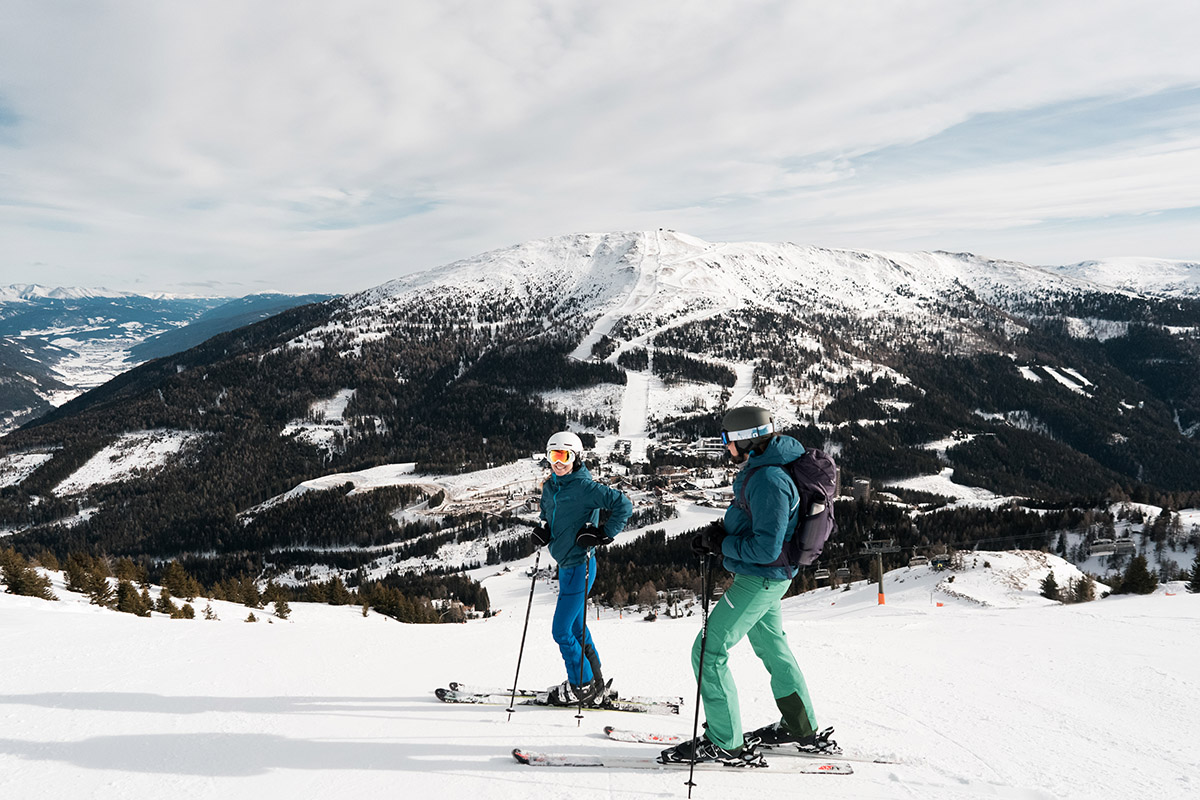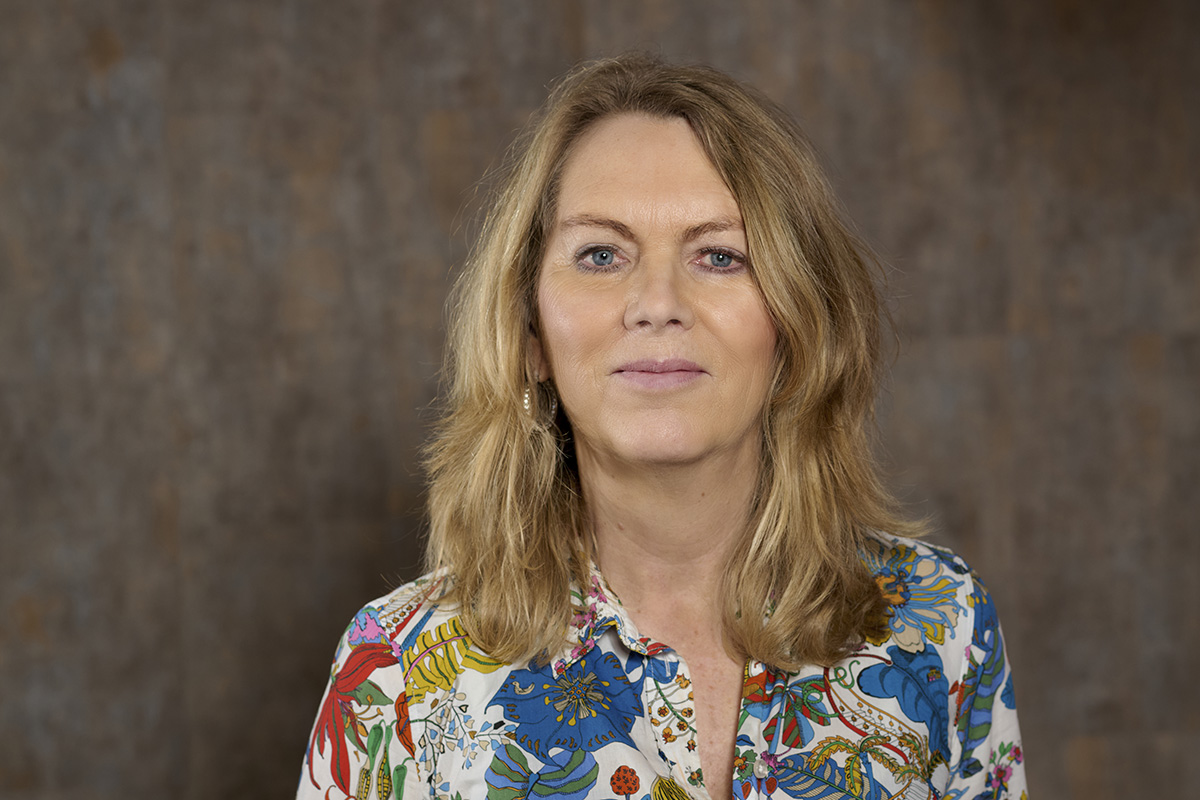Paris on the Neisse River
TEXT & PHOTOS: WIBKE CARTER
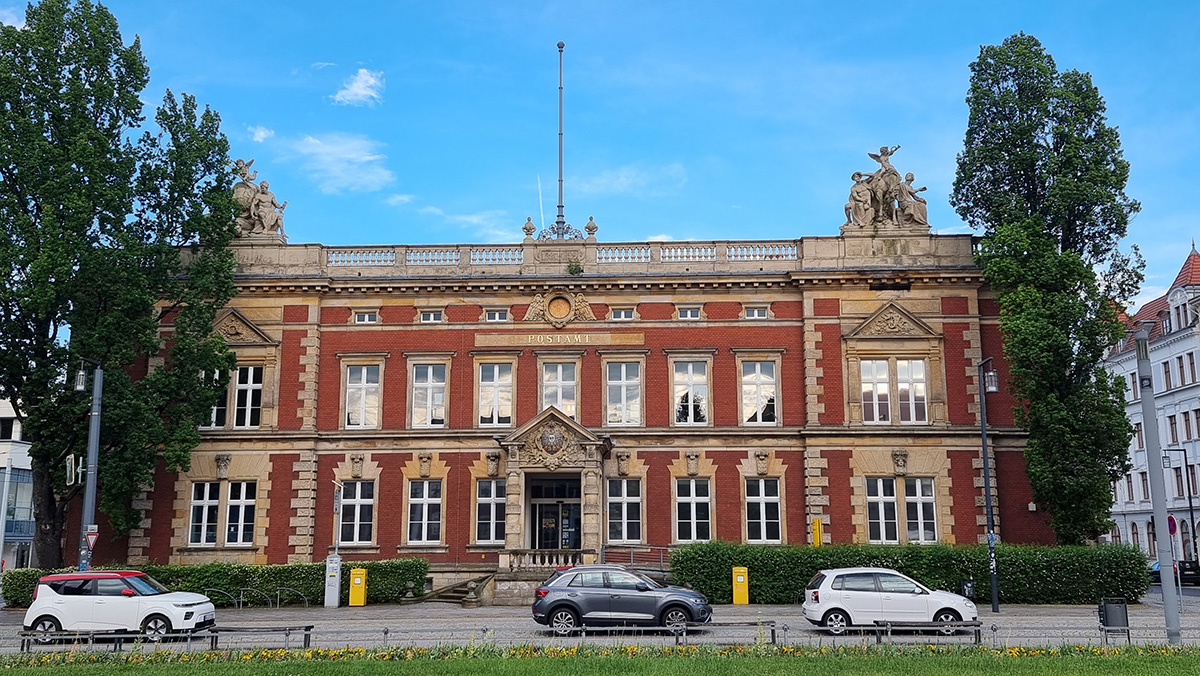
The old post office.
The reputation of Görlitz’s Old Town has long extended beyond the borders of Germany and Europe – even Hollywood has succumbed to its magic. Our writer Wibke Carter travelled to Saxony for a closer look.
You don’t come to Görlitz by chance. You have to have good reasons to take the long train journey from Berlin through Upper Lusatia. The local trains, with a transfer in Cottbus, need around three hours from Germany’s capital to its easternmost city. But the peripheral location and the fact that the sun rises a little earlier here are not enough reasons for most travellers to visit. They come here for the architecture.
After all, Görlitz is praised as an urban masterpiece. And rightly so: more than 4,000 architectural monuments await the visitors. While other places struggle to imitate authenticity with more or less successful replicas, Görlitz gives an idea of what the whole country once looked like.
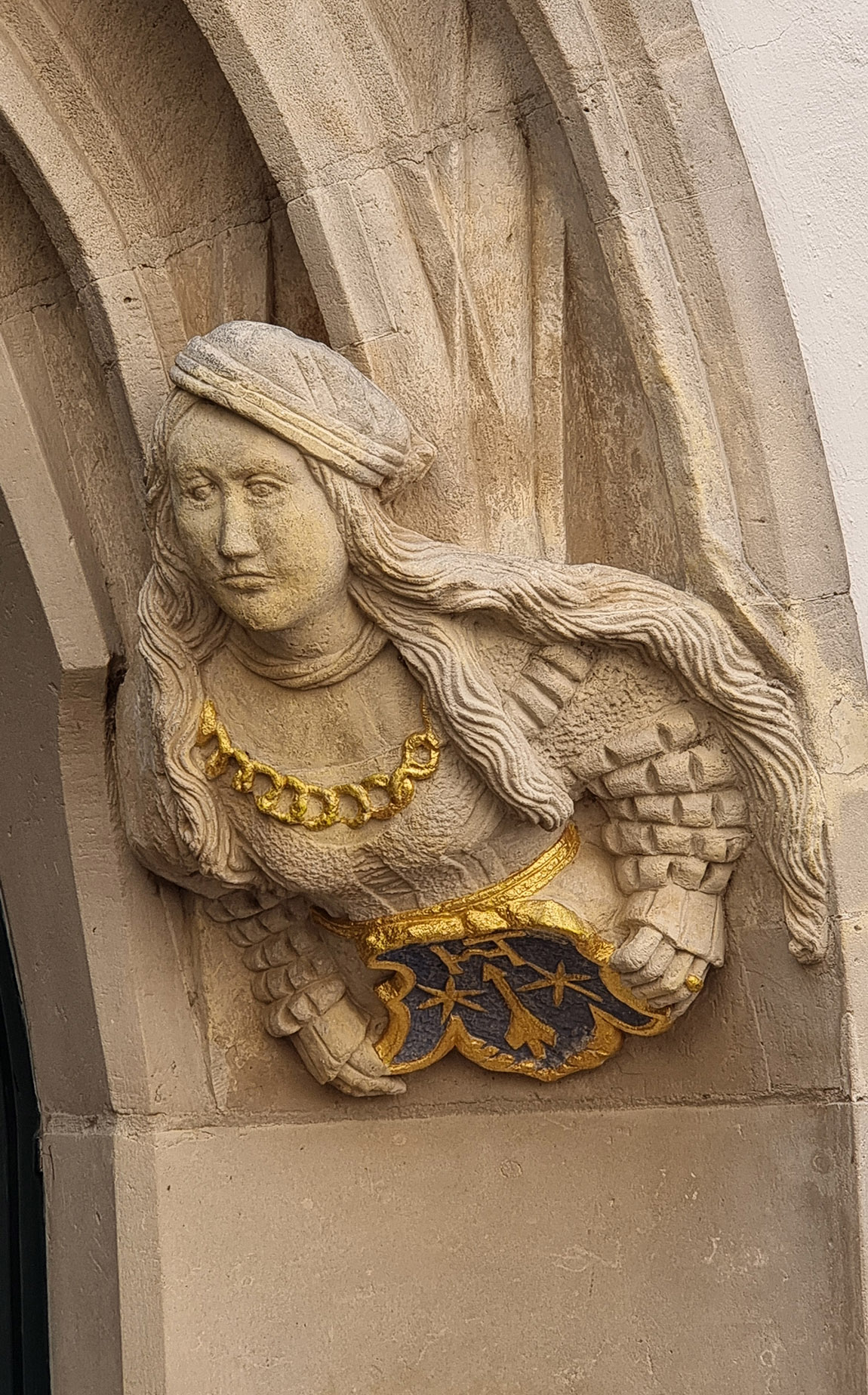
Woman’s head in the Flüsterbogen (whispering arch).
Glitz and glamour
You can stroll from one style period to another, to finely restored late Gothic, Renaissance and Baroque houses in the old town and through spacious Art Nouveau and Wilhelminian style districts that surround the historic centre. There is so much history and grandeur that the leading German newspaper “Die Welt” once called Görlitz “The Paris on the Neisse River”.
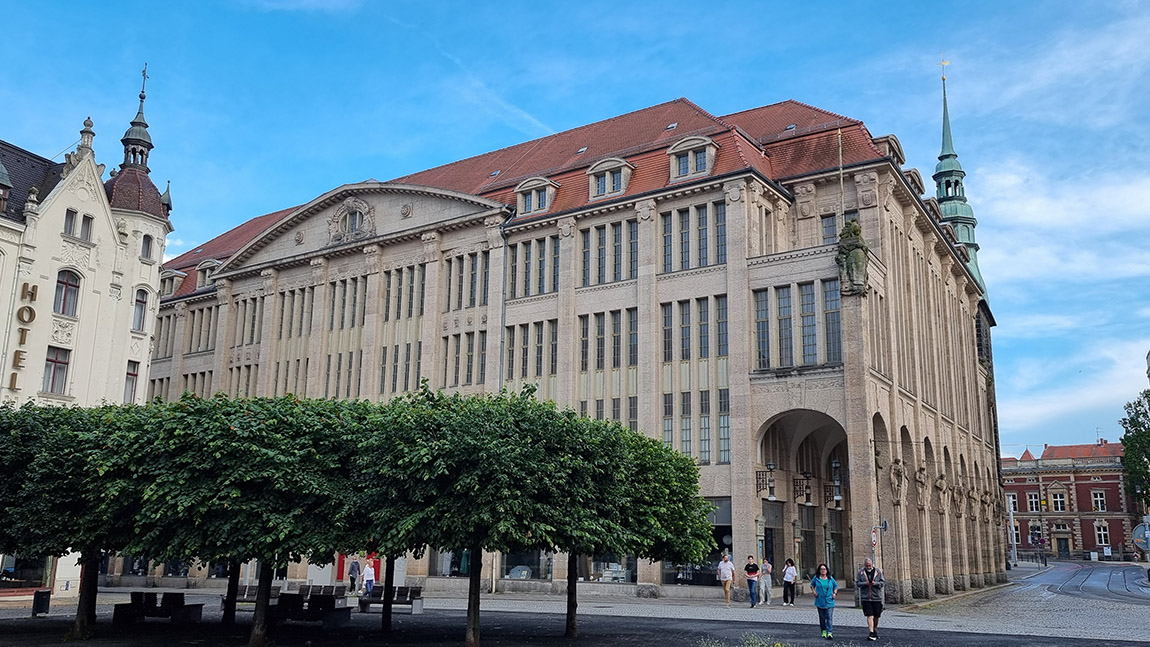
Görlitz Art Nouveau Kaufhaus
Indeed, the small provincial town of about 57,000 inhabitants does not need to shy away from the comparison with the capital of France: Richly decorated portals and façades, beautiful inner courtyards and arcades bear witness to the fact that Görlitz was one of the richest cities in Germany for most of its history. “In the Middle Ages, it was located at the crossroads of two trade routes, and relied on the precious dye woad, cloth production and wagon building”, said guide Elke Schallwig. Thanks to its wealth and power, Görlitz became the urban center of Upper Lusatia, located in the part of Silesia that remained German after 1945.
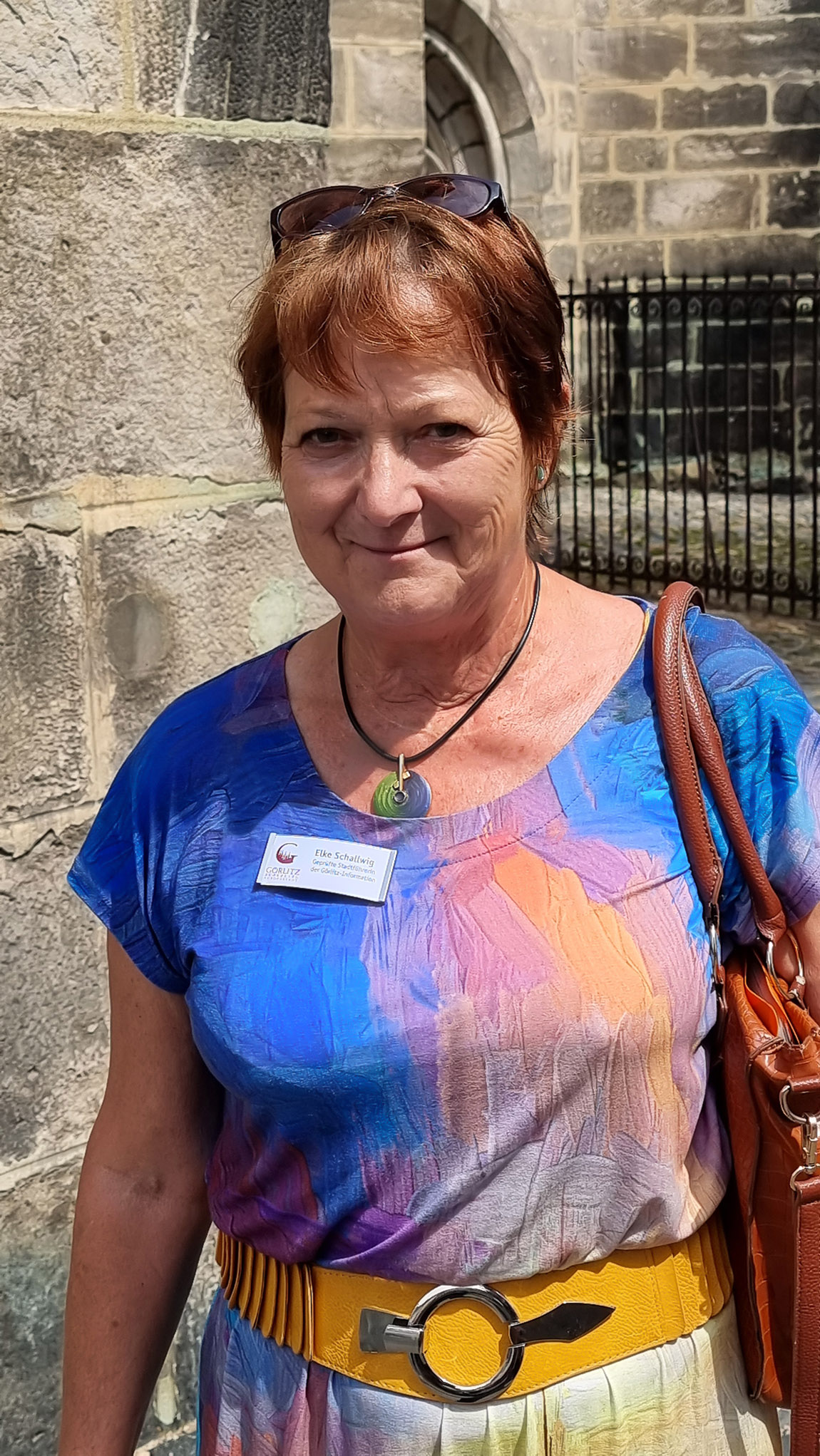
Elke Schallwig
Years of neglect
Today, when the sound of horse-drawn carriages echoes over the cobblestones, the streets look as dignified as they once did. The town on the Neisse River survived two world wars unscathed, but decades of neglect during the GDR era almost destroyed it. The workers’ and peasants’ state deliberately allowed the buildings of the middle classes to fall into disrepair. Boreholes had already been prepared on the most dilapidated houses for the installation of explosive charges to blow up parts of the old town.
But then came the German reunification and with it the resurrection from the ruins. Most of the listed buildings were brilliantly renovated, in large part thanks to a donor who gave generously every year between 1995 and 2016. “However, there were two conditions attached to the ‘Old Town Million’ as the locals called it”, remembered Schallwig. “The donor had to remain anonymous and the money had to be used for the restoration of old buildings in the German part only”.
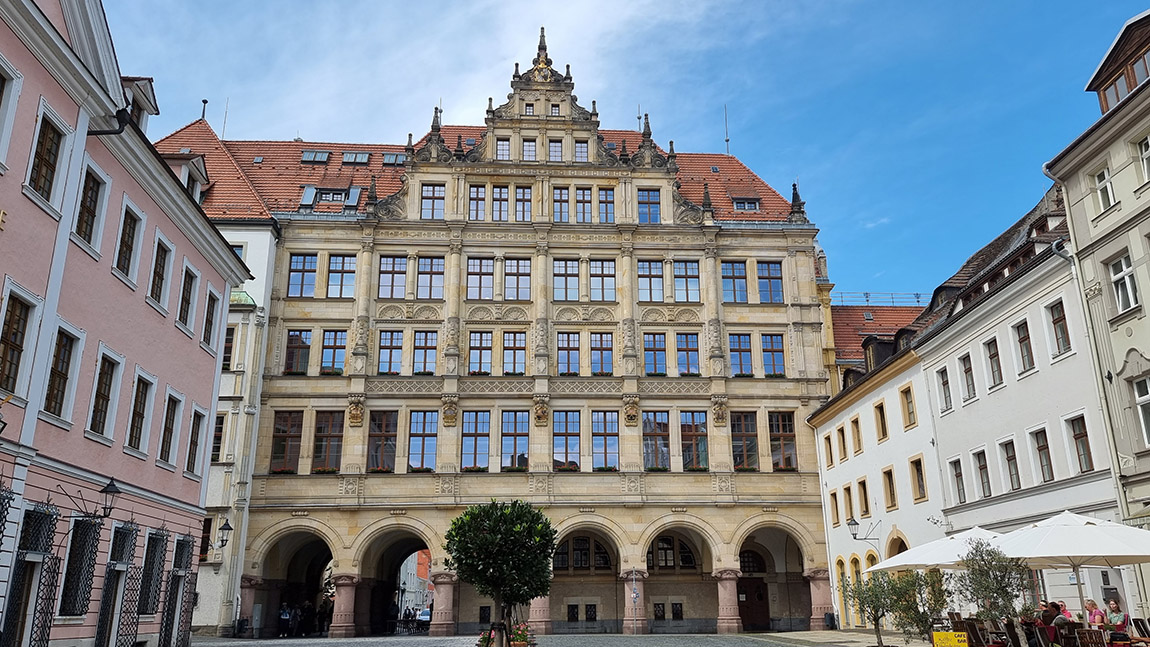
Görlitz new town hall
Hollywood calling
The variety of architectural styles on such a small scale became a drawcard for Hollywood directors who were attracted by the beauty of the original, preserved buildings. “Inglourious Basterds”, “The Reader” and “Around the World in 80 Days”, were filmed here, earning the city the nickname “Görliwood”. However, it also doubled as other cities: Venice, New York, Frankfurt and Strasbourg – Görlitz, the master of illusion. A starring role went to the Art Nouveau “Kaufhaus“ that was built in 1913 in the heart of the town. Considered the most beautiful department store in Germany – a “Lafayette” in East Saxony if we must bring up Paris once more -, it doubled as the “Grand Hotel Budapest” in the 2014 film by Wes Anderson.
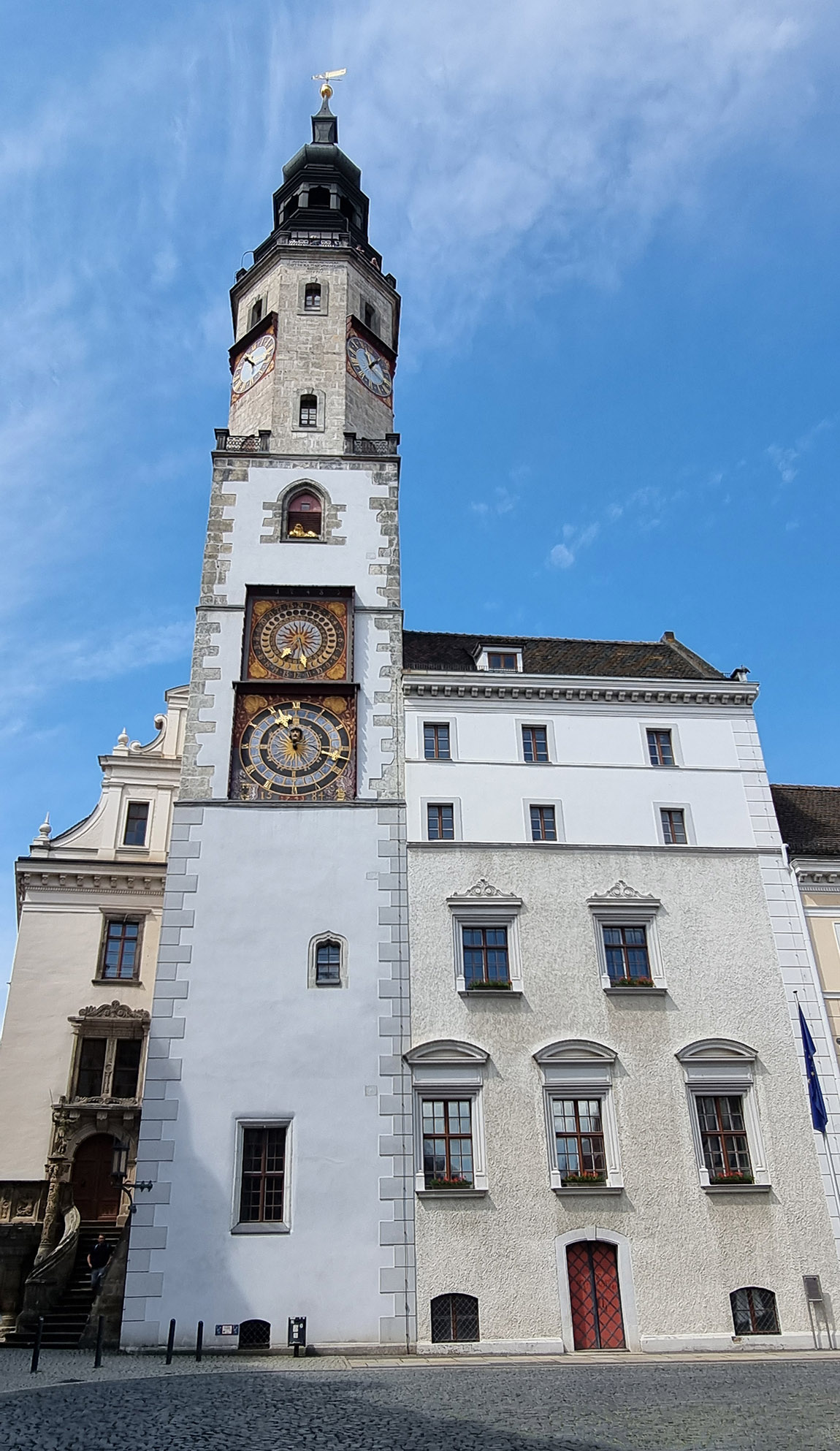
Görlitz old town hall
Polish neighbours
When the Oder-Neisse line was declared Poland’s western border in 1945, Görlitz became a divided city. The smaller part, located on the eastern side of the Neisse, became the independent Polish town of Zgorzelec. Only after the border controls between Poland and Germany ended in December 2007 could Görlitz and Zgorzelec become one city again slowly – now in two countries. The fact that a national border is crossed while strolling across the Old Town Bridge is only noticeable by the poles in the respective national colours which rise up on both sides of the riverbank.
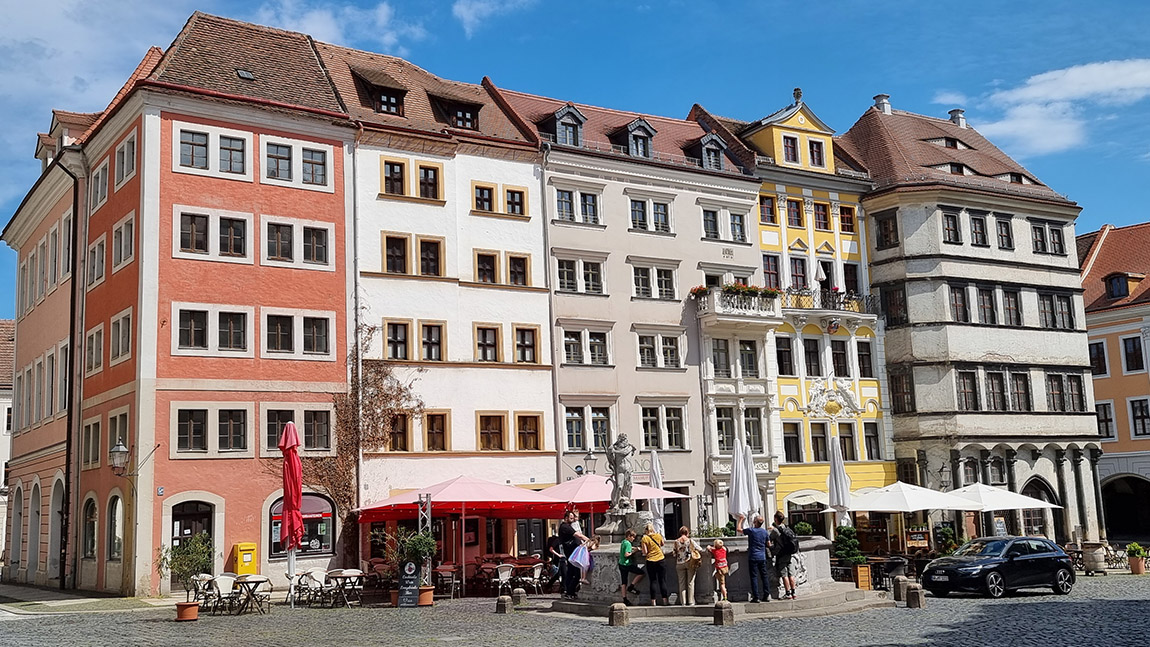
Colourful houses along the Untermarkt
Many are proud of their city. Not necessarily of its enormous show value, but of what lives on in Görlitz, in its street names, in the vocabulary and tone of the language, this East Lusatian dialect in which people cursed, sang, whispered, preached, spoke justice and confessed love, and, of course, in its buildings in which generations have left their memories behind.
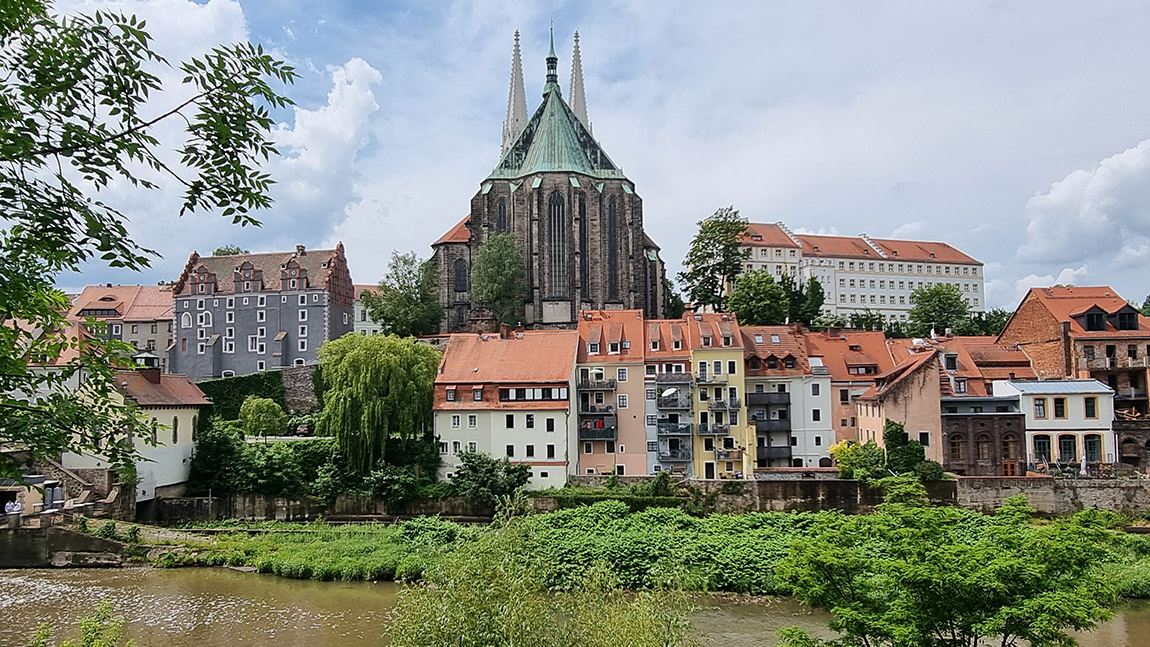
View across the Neisse River from Poland
Web: www.goerlitz.de
Subscribe to Our Newsletter
Receive our monthly newsletter by email


